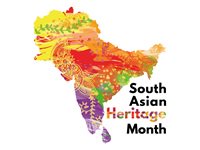 South Asian culture has made a significant impact on Britain and its rich and proud heritage has blended into the British way of life, contributing to the diversity of our nation. Celebrating South Asian Heritage Month (18 July to 17 August), provides an opportunity for us to discover, embrace and celebrate the history and identity of British South Asians. Find out more about the South Asian Heritage Month campaign.
South Asian culture has made a significant impact on Britain and its rich and proud heritage has blended into the British way of life, contributing to the diversity of our nation. Celebrating South Asian Heritage Month (18 July to 17 August), provides an opportunity for us to discover, embrace and celebrate the history and identity of British South Asians. Find out more about the South Asian Heritage Month campaign.
This year's theme 'Stories to tell' promotes the unique stories that make up South Asian communities, but it is also an opportunity to share your memories and preserve them in the archives at Surrey History Centre. Documenting South Asian presence in Surrey is key to making our heritage collections representative of all communities in the county. If you have stories or material which you can contribute, we'd be delighted to hear from you.
Ugandan Asian refugees
In 2022, the British Ugandan Asians at 50 project marked the 50th anniversary of the expulsion of Asian communities from Uganda.
On 4 August 1972, the Ugandan dictator, General Idi Amin, ordered around 60,000 ethnic Asians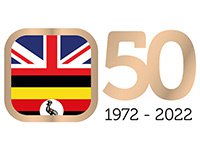 to leave the country within 90 days. In the autumn and winter of 1972 to 1973, over 28,000 Ugandan Asians refugees who held British passports, arrived in the UK following their eviction, after hastily organised and often fraught journeys. Most left behind their entire wealth and worldly possessions.
to leave the country within 90 days. In the autumn and winter of 1972 to 1973, over 28,000 Ugandan Asians refugees who held British passports, arrived in the UK following their eviction, after hastily organised and often fraught journeys. Most left behind their entire wealth and worldly possessions.
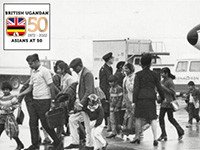 The Home Office organised The Ugandan Resettlement Board (URB) to set up camps across the country in which to house in-coming refugees. The majority were billeted at large camps across the UK but one small temporary camp was located in Surrey, at Hobbs Barracks, near Lingfield. So what material exists in our collections showing how the refugees were received in Surrey, and what was their experience?
The Home Office organised The Ugandan Resettlement Board (URB) to set up camps across the country in which to house in-coming refugees. The majority were billeted at large camps across the UK but one small temporary camp was located in Surrey, at Hobbs Barracks, near Lingfield. So what material exists in our collections showing how the refugees were received in Surrey, and what was their experience?
Hobbs Barracks, Lingfield
Hobbs Barracks in Lingfield was one of sixteen reception and resettlement camps. This accommodation was used from October 1972 to January 1973, when refugees who had not been resettled were transferred to other camps. Surrey County Council papers record a little about life and conditions at the camp, including the education of children at the Hobbs Barracks School (reference CC26). Additionally, Felbridge and District History Group has researched information about Hobbs Barracks and discovered that some of the younger refugees were kept active by helping with chores around the camp. However, most records relating to the refugees contain sensitive or confidential information and are therefore subject to access restrictions, so researching around the subject is key to raising awareness of the refugees' time in the county.
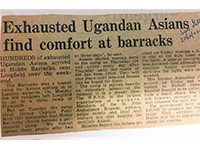 On Friday 20 October 1972 the Surrey Mirror reported that 450 refugees had arrived at Lingfield [Hobbs Barracks] the previous weekend but had left only two days later for a permanent camp in Plymouth. The upheaval must have been traumatic and Camp Administrator, Group Captain, Peter Bird, was unhappy: 'We cannot uproot these people after two or three days'. His words were heeded and by Thursday 19 October other refugees had arrived at Lingfield to stay; thereafter refugees apparently arrived at the rate of 150 a day until the camp quota of 800 was reached.
On Friday 20 October 1972 the Surrey Mirror reported that 450 refugees had arrived at Lingfield [Hobbs Barracks] the previous weekend but had left only two days later for a permanent camp in Plymouth. The upheaval must have been traumatic and Camp Administrator, Group Captain, Peter Bird, was unhappy: 'We cannot uproot these people after two or three days'. His words were heeded and by Thursday 19 October other refugees had arrived at Lingfield to stay; thereafter refugees apparently arrived at the rate of 150 a day until the camp quota of 800 was reached.
Things didn't exactly get off to an ideal start however, when on the first night, as the refugees arrived, a fire in one of the barrack huts fused the lights, and a state of emergency was declared! It is no surprise that, in an undated URB Bulletin of around January 1973, there is a statement about the site's impending closure: 'The closure of Hobbs Barracks is part of the Board's policy to reduce the number of resettlement centres as the total population diminishes. Hobbs Barracks is included among the early closures because of its exceptionally high fire risk and because of the accommodation now conveniently available for the remaining residents at centres at Maresfield, West Malling and Greenham Common.' (reference 6128/1/139).
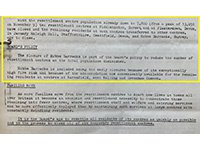 In the Ugandan Resettlement Board Interim Report to Parliament, dated May 1973 the functioning dates of 'Lingfield' [Hobbs Barracks Camp], are given as 13 October 1972 to 15 January 1973 (reference 6128/1/139, Appendix A). Apparently, most of the families left the Lingfield area, but one or two moved to East Grinstead, and by May 1974 the Hobbs Barracks site was being used as a film set.
In the Ugandan Resettlement Board Interim Report to Parliament, dated May 1973 the functioning dates of 'Lingfield' [Hobbs Barracks Camp], are given as 13 October 1972 to 15 January 1973 (reference 6128/1/139, Appendix A). Apparently, most of the families left the Lingfield area, but one or two moved to East Grinstead, and by May 1974 the Hobbs Barracks site was being used as a film set.
The Surrey volunteer aid effort
County and district authorities were involved in the refugee aid effort, along with volunteers from the Red Cross, Salvation Army, Women's Royal Voluntary Service (WRVS), faith groups and the British Council of Churches, who all helped distribute clothes and provide basic provisions. Boroughs and Districts were asked to communicate with parishes about the plight of the refugees and a letter of 6 September 1972 to Banstead Urban District Council from Mrs Mollie E Cook, Hon. Secretary of Tattenham Corner and Burgh Heath Parochial Church Council, shows the positive support across Surrey. She writes: 'Knowing that the Government has asked all local Councils to consider what steps can be taken to assist in this emergency, this Council offers to give whatever help is in within its power…' (reference 6128/1/139).
The WRVS Surrey Branch records contain papers relating to the charity's role in welcoming the refugees to Hobbs Barracks and the chain of command there. Notes from a 'preliminary exploratory meeting' at Leatherhead Council Chambers, dated 6 October 1972, name the Camp Administrator as Group Captain Peter Bird. Cultural differences needed sensitive handling and a duty of the 'Sanitation Officer', role is noted as 'Teaching U[gandan] As[ians] the use of European loos - WRVS for women, men for men.'
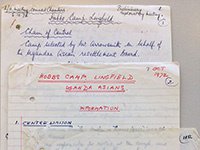 Notes of the Dorking District Centre organiser record that WRVS members acted as escorts for the reception of Ugandan Asians at Gatwick Airport, primed to deal with a variety of situations. It was planned that the volunteer teams would work in 4-hour shifts with no one team dealing with more than two plane loads of refugees. The Gatwick Team was made up of WRVS volunteers from Dorking Rural, Godstone Rural and Reigate branches, and these would be supplemented by the Epsom, Leatherhead and Banstead teams. Teams from Bagshot, Egham, Frimley, Camberley and Staines would be on hand if needed to help out with refugees landing at Heathrow. The URB 'Interim Report' cites that in total 1794 refugees arrived at Gatwick (reference 6128/1/139, page 9).
Notes of the Dorking District Centre organiser record that WRVS members acted as escorts for the reception of Ugandan Asians at Gatwick Airport, primed to deal with a variety of situations. It was planned that the volunteer teams would work in 4-hour shifts with no one team dealing with more than two plane loads of refugees. The Gatwick Team was made up of WRVS volunteers from Dorking Rural, Godstone Rural and Reigate branches, and these would be supplemented by the Epsom, Leatherhead and Banstead teams. Teams from Bagshot, Egham, Frimley, Camberley and Staines would be on hand if needed to help out with refugees landing at Heathrow. The URB 'Interim Report' cites that in total 1794 refugees arrived at Gatwick (reference 6128/1/139, page 9).
Clothing was a particular issue as many of the new arrivals wore clothes which provided little comfort for the British winter. The WRVS instructions note: 'Escorts should take a large umbrella, no matter what the weather – saris wet are cold and uncomfortable. Take sandwiches in case no meal available' (reference 5380/2/20).
Nitin Rayvadera, who was 20 when he arrived at Hobbs Barracks, particularly remembers being given a winter coat: "The winter in 1972 was extremely harsh. And coming from a tropical climate, it was a huge change." See the article 'As a community, we can overcome anything' on Asian Voice news website.
The Hon. Jaffer Kapasi O.B.E., now a member of the 'British Ugandan Asians at 50' project steering committee, was taken to Hobbs Barracks and recalls the huge halls of beds laid out for the refuges, and the differences in British food. See the interview with Jaffer Kapasi on YouTube (this video is 2 hours and 17 minutes and the references to Hobbs Barracks start from around 1 hour 24 minutes into the video).
Local authorities were reimbursed their expenditure by the Resettlement Board but local organisations and charities also stepped in to help those who resettled in Surrey. Guildford International Council had previously helped local Hungarian refugees in 1957 and set up a working party in April 1973 to help Ugandan Asians who had settled in Guildford. The Council's papers record details of families and their accommodation situations in the town (reference 7169/3). Note is made of the damp and unsanitary conditions experienced by one family in a property at Waterworks Cottages, Ladymead, which had been empty since the 1968 floods, whilst properties in Walnut Tree Close had inadequate bathing facilities. A note of items required by refugees includes basic provisions such as carpets, vinyl flooring, furniture, showers, and paraffin heaters. Educational and cultural needs were also addressed, such as the emphasis on improving English language skills, work training, and more practically 'Getting accustomed to English forms of life… and how to approach people and how to do shopping'.
The refugees had a strong tradition of home ownership and wanted to work or re-join education as soon as they could. Many of the refugees were skilled, highly educated, or had owned businesses in Uganda, and had to use ingenuity and hard graft to build up their businesses again here in the UK. Most Ugandan Asian refugees did find work and housing and integration came slowly but prejudice and poor understanding of cultural differences meant some of their experiences were not universally positive. More recently, some Ugandan Asians have returned to Africa to rebuild their lives there.
Can you help us?
There is little in our collections that tells of the experience of coming to Surrey from the refugees' viewpoint. Were you a Ugandan Asian refugee in Surrey? Do you have memories of the refugees here and their subsequent resettlement? We'd love to hear from you if you have any information about Ugandan Asian refugees in Surrey.
Read our full research about Hobbs Barracks and Ugandan Asians in Surrey on our Exploring Surrey's Past website.
Find out more about the South Asian community in our collections, including papers of the Shah Jahan Mosque in Woking, South Asian Muslim communities, and Gurkhas.
Images
Select image to view a larger version.
- Ugandan Asian exiles landing in Britain in 1972 (Courtesy of The National Archives and National Education Network (NEN))
- 'Exhausted Ugandan Asians find comfort at Barracks', 'Surrey Mirror', 20 October 1972 (courtesy of Lata Desai, British Ugandan Asians at 50 Project)
- Ugandan Resettlement Bulletin circa January 1972, in the papers of Banstead Urban District Council (reference 6128/1/139)
- Papers from the Surrey branch of the Women's Royal Voluntary Service relating to Ugandan Asian refugees at Hobbs Barracks, Lingfield, October 1972 (reference 5380/2/20)

